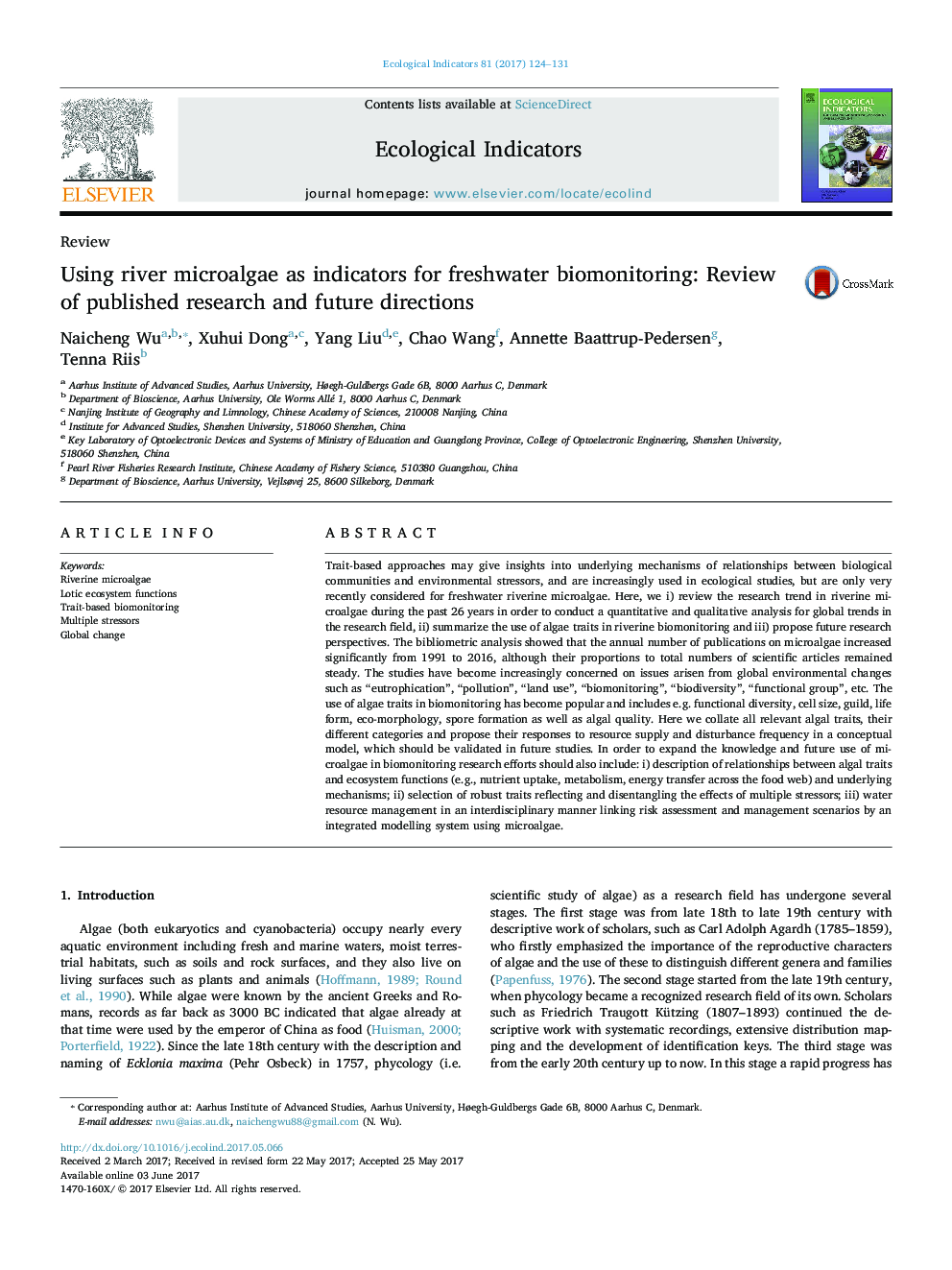| Article ID | Journal | Published Year | Pages | File Type |
|---|---|---|---|---|
| 5741417 | Ecological Indicators | 2017 | 8 Pages |
â¢Algal traits are increasingly used in biomonitoring, but only very recently considered for freshwater microalgae.â¢Latest algal traits are summarized and include functional diversity, cell size, guild, life form, eco-morphology, spore formation as well as algal quality.â¢A conceptual model of trait responses to resource supply and disturbance frequency is proposed.â¢Future perspectives are traits â ecosystem functions, traits - multiple stressors, and trait-based integrated water resource management.
Trait-based approaches may give insights into underlying mechanisms of relationships between biological communities and environmental stressors, and are increasingly used in ecological studies, but are only very recently considered for freshwater riverine microalgae. Here, we i) review the research trend in riverine microalgae during the past 26 years in order to conduct a quantitative and qualitative analysis for global trends in the research field, ii) summarize the use of algae traits in riverine biomonitoring and iii) propose future research perspectives. The bibliometric analysis showed that the annual number of publications on microalgae increased significantly from 1991 to 2016, although their proportions to total numbers of scientific articles remained steady. The studies have become increasingly concerned on issues arisen from global environmental changes such as “eutrophication”, “pollution”, “land use”, “biomonitoring”, “biodiversity”, “functional group”, etc. The use of algae traits in biomonitoring has become popular and includes e.g. functional diversity, cell size, guild, life form, eco-morphology, spore formation as well as algal quality. Here we collate all relevant algal traits, their different categories and propose their responses to resource supply and disturbance frequency in a conceptual model, which should be validated in future studies. In order to expand the knowledge and future use of microalgae in biomonitoring research efforts should also include: i) description of relationships between algal traits and ecosystem functions (e.g., nutrient uptake, metabolism, energy transfer across the food web) and underlying mechanisms; ii) selection of robust traits reflecting and disentangling the effects of multiple stressors; iii) water resource management in an interdisciplinary manner linking risk assessment and management scenarios by an integrated modelling system using microalgae.
